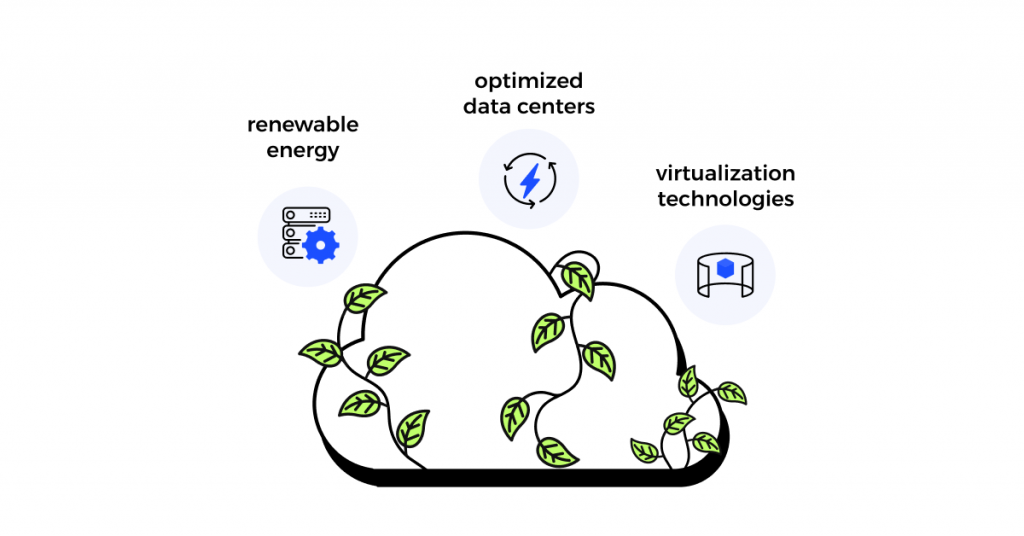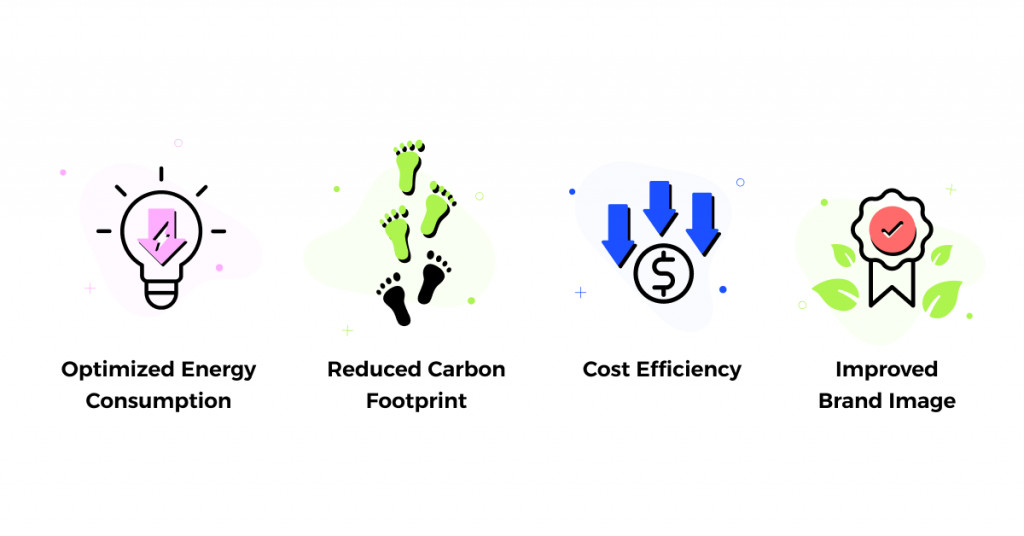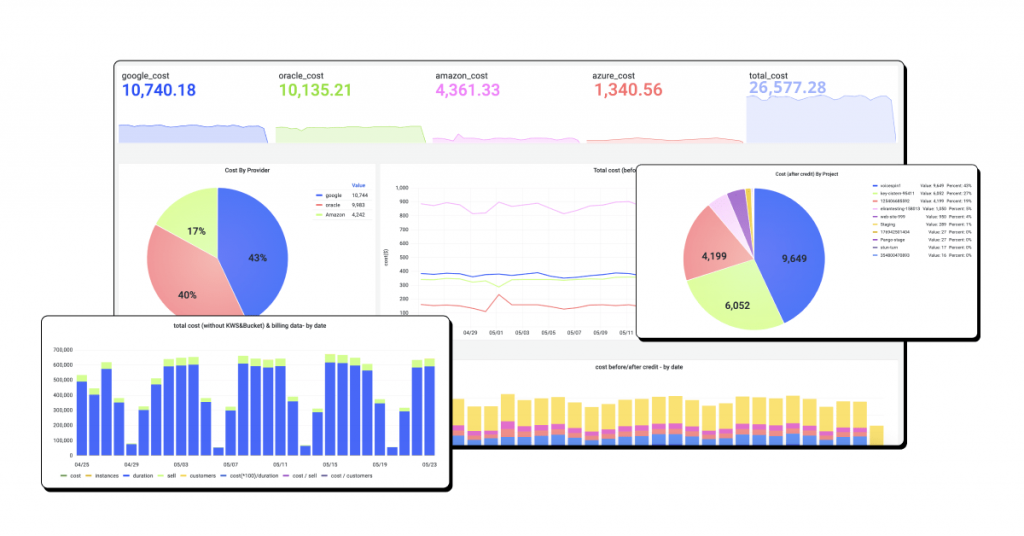Given the numerous benefits, from greater flexibility and scalability to cost-efficiency, among others, cloud computing has become a go-to approach for many IT organizations. In addition, using cloud infrastructure instead of on-premises data servers can have a significant positive environmental impact by dramatically reducing energy consumption and overall carbon footprint.
In fact, this conclusion has been proven by several industry-related studies, including a Microsoft – WSP collaborative study on the carbon benefits of cloud computing, which revealed that using Microsoft Cloud has the potential to improve energy efficiency by up to 93% as well as generate 98% fewer carbon emissions as compared to traditional enterprise data centers.
Uncover opportunities to optimize your cloud, simplify cloud management, and reduce costs.
No wonder adopting green cloud computing has become an environmental imperative for IT organizations and businesses across various industries. In this blog, we’ll explore what green computing is all about, its advantages, and how green cloud computing can assist businesses in their continuous efforts to eliminate the environmental impact of data centers and IT infrastructure.
What is Green Cloud Computing?

Green cloud computing is essentially an approach to designing, producing, implementing, and using cloud computing infrastructure and resources in an environmentally friendly way with the aim to reduce energy consumption and carbon dioxide emissions and minimize other negative environmental impacts of IT infrastructure.
Green cloud computing practices and strategies may involve using renewable energy sources, optimizing data centers and servers to lower overall energy demand, utilizing virtualization technologies (consolidating multiple virtual servers into a single physical server), continuous resource usage optimization, and more.
As more businesses and organizations have come to realize the positive impact of green cloud computing on the environment, its adoption is going to increase in the following years. A recent TELUS survey actually found that 68% of tech leaders believe a green cloud computing solution is important for their organization.
Manage your single or multi-cloud infrastructure and cut down on your cloud bill.

The Benefits of Green Cloud Computing

Optimized energy consumption
From an energy usage perspective, cloud computing in general and green cloud computing, in particular, offers a much more energy-efficient approach. Traditionally deployed on-premises data centers are known to be energy-intensive in terms of data center’s power consumption. By moving their IT infrastructure to the cloud and implementing green cloud computing practices, organizations can achieve considerable energy savings. According to Accenture’s analysis of the largest public cloud service providers, average enterprise-owned-to-cloud migration can lead to an impressive 65% energy reduction.
Reduced carbon footprint
By optimizing energy consumption and utilizing renewable energy sources, green cloud computing greatly contributes to reducing carbon footprint. As stated in Accenture’s ‘The Green Behind the Cloud’ report, migrations to the public cloud services can reduce global carbon emissions by 84%, meaning 59 million tons of CO2 per year, which represents a 5.9% reduction in total IT emissions and equals to taking 22 million cars off the road. Furthermore, designing software applications specifically for the cloud can reduce carbon emissions by up to 98%.
Increased cost efficiency
Not only does harnessing the power of green cloud computing help organizations minimize energy consumption, reduce carbon emissions, and achieve environmental sustainability, but it can also ultimately lead to cost reductions – from savings on energy bills for cloud providers to reduced cloud bills for the users of cloud services. By proactively managing their cloud environments with professional cloud cost management tools, businesses can eliminate unused resources, avoid unnecessary waste, and thus reduce their cloud expenses.
Improved brand image
Beyond the direct environmental impact through optimized energy usage and reduced carbon emission, adopting green computing practices can also bring in additional indirect benefits. When your organization clearly demonstrates commitment to environmental responsibility through green cloud computing, that creates a more positive perception of your business and improves your brand image among clients and stakeholders in the era of environmental concerns and a growing demand for sustainability.
How Can You Contribute to Green Cloud Computing?
Migrating your IT infrastructure to green cloud providers
While migrating on-premises infrastructure to the public cloud is already a huge step towards becoming more sustainable, cloud computing still has a significant energy consumption and carbon footprint. Even though all cloud vendors certainly have sustainability initiatives in place, the level of corporate commitment to sustainability and the progress in meeting carbon reduction goals may vary, i.e., not all cloud providers are equally ‘green’.
That being said, the Greenpeace report revealed that, out of the three biggest public cloud providers, Amazon Web Services (AWS), Microsoft Azure, and Google Cloud Platform (GCP), GCP came out as the most environmentally friendly cloud provider. Let’s take a closer look at the environmental commitments and green initiatives major providers adhere to:
- Amazon Web Services (AWS): Based on the Amazon Sustainability Report, Amazon claims that AWS data centers utilize some of the most energy-efficient hardware in the world. The company has also pledged to power its operations with 100% renewable energy by 2025 while keeping focus on reaching net-zero carbon by 2040.
- Google Cloud Platform (GCP): In 2020, Google became the first company to achieve a zero lifetime net carbon footprint, meaning the company has eliminated its entire carbon legacy. The company has also made a bold commitment to operate on 24/7 carbon-free energy in all its data centers worldwide by 2030 rather than relying on the traditional approach of matching energy usage with renewable energy.
- Microsoft Azure: Microsoft has committed to shifting its cloud data centers to 100% supply of renewable energy sources by 2025. The company also claims to become carbon negative by 2030 and by 2050 to remove from the environment all the carbon the company has emitted since 1975. Microsoft Azure’s customers can also use a carbon calculator to track emissions associated with their own cloud workloads.
Implementing green cloud computing practices
While partnering with environmentally conscious cloud providers is an essential initiative to support environmental sustainability, companies can drive even greater energy efficiency and carbon reductions by implementing green cloud computing practices and strategies in their daily operations. These may include:
- Resources optimization through rightsizing and adjusting the capacity of virtual machines to match your actual workload.
- Taking advantage of auto scaling to balance resource allocation based on demand to avoid over-provisioning.
- Minimizing data center energy usage and maximizing resource use through dynamic voltage frequency scaling (DVFS).
- Consolidating workloads through virtualization and running multiple applications on a single virtual server.
- Using energy-efficient software development tools and methodologies and moving to cloud-native architectures and deployments.
- Scheduling workloads and running resource-intensive tasks during off-peak hours when energy demand is lower.
- Minimizing unnecessary data storage, utilizing data tiering, and optimizing data transfers.
Leveraging cloud cost optimization solutions

Although moving to the public cloud and implementing green computing practices are essential, businesses can optimize their cloud usage and eliminate their cloud waste in a much more efficient way by using cloud cost intelligence software solutions. According to Flexera’s 2023 State of the Cloud Report, organizations waste 28% of their cloud spend.
Since cloud waste is primarily caused by resource underutilization, by implementing auto-scaling, instance rightsizing, and scheduling tools, businesses can optimize their resource usage, impacting sustainability, and significantly reduce their cloud waste and the overall cloud spend.
E.g., with the Shibuya AWS cost optimization platform, businesses can gain complete visibility into their AWS resource utilization and automatically manage underutilized resources to avoid over-provisioning and eliminate cloud waste. That can be done through creating and managing schedules for resources to align resource usage with the actual operational needs. Similarly, Shibuya allows businesses to manage their cloud environments across other major cloud service providers, including Google Cloud Platform, Oracle Cloud Infrastructure, and Microsoft Azure, allowing for smarter resource allocation in multi-cloud environments.
Wrapping up

By moving their on-premises IT infrastructure to the public cloud, partnering with environmentally friendly cloud providers that have implemented energy-efficient cloud computing technologies, embracing green cloud computing best practices and strategies, and leveraging cloud optimization and cost management solutions, such as Shibuya multi-cloud cost management tool, businesses and organizations can become more sustainable and contribute to reducing energy consumption and carbon footprint of cloud computing.
Book a demo now to see Shibuya’s cloud management intelligence solution in action, and let’s work together towards a more sustainable, environmentally friendly, and responsible approach to cloud computing.
